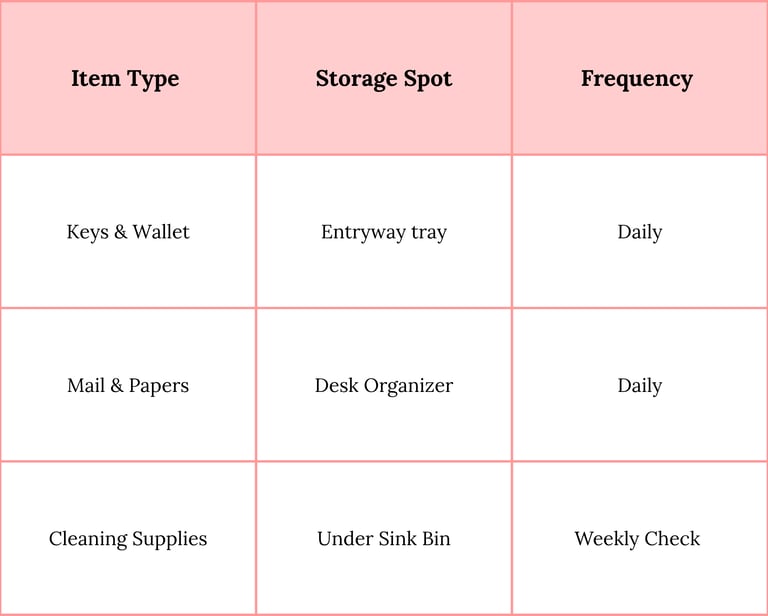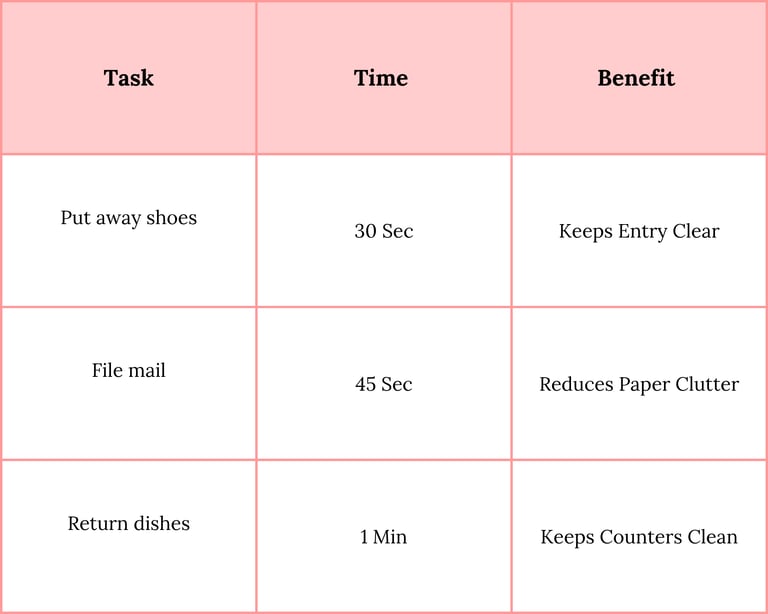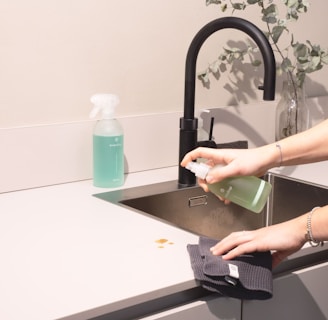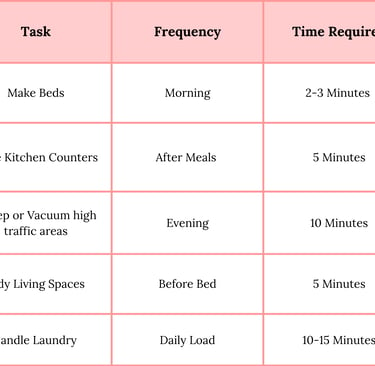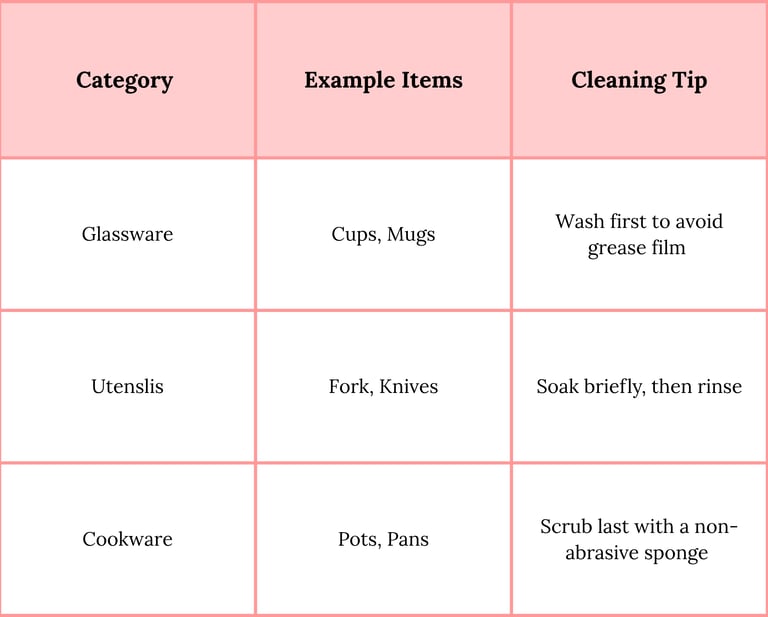10 Daily Habits to Maintain a Clean and Organized Home
ORGANIZATION
11/17/20258 min read


Keeping your home clean and organized doesn’t have to feel like a major project. By building a few simple habits into your daily routine, you can maintain a tidy, peaceful space without spending hours cleaning each week. Small, consistent actions each day make the biggest difference in keeping your home looking and feeling orderly.
You can start by focusing on practical routines that fit naturally into your lifestyle. Making your bed, putting items back after use, and doing quick surface wipes can prevent clutter from piling up. When you manage small tasks as they come, you reduce the need for overwhelming cleaning sessions later.
These daily habits don’t take much time, but they create lasting results. A consistent approach helps you stay in control of your environment and enjoy a space that supports your day instead of adding stress.
Key Takeaways
Simple daily habits keep your home clean without long cleaning sessions.
Consistency helps prevent clutter and maintain order.
Small tasks done regularly create a calm, organized living space.
Start Your Day With a Made Bed
A made bed sets the tone for an organized home. This small action helps maintain order, supports better daily habits, and makes your space feel calm and tidy from the moment you wake up.
Benefits of Making Your Bed
When you make your bed each morning, you create an instant sense of accomplishment. This quick task signals that the day has started and helps you transition from rest to activity. It also keeps your bedroom looking cleaner, even if nothing else changes.
A tidy bed reduces visual clutter, which can make your mind feel more organized. Studies suggest that people who make their beds regularly report better sleep quality and higher productivity. The act itself takes less than two minutes but contributes to a more peaceful environment.
Psychological benefits include:
A feeling of discipline and control
Lower stress levels from reduced clutter
A positive feedback loop that encourages other good habits
By keeping your bed neat, you also make it easier to maintain a tidy home overall.
Tips for Consistency
To make this habit stick, simplify the process. Choose bedding that’s easy to straighten—such as a fitted sheet, a lightweight comforter, and minimal decorative pillows. The fewer steps involved, the more likely you are to follow through every day.
Set a trigger for the habit. For example, make your bed right after getting up or after brushing your teeth. Linking it to an existing routine helps reinforce consistency.
If you share your bed, agree on who will make it and when. Keep the goal realistic—your bed doesn’t need to look perfect, just neat. Consistency matters more than precision.
Use a quick checklist:
Smooth the sheets.
Pull up the comforter evenly.
Arrange pillows neatly.
This simple sequence keeps your space orderly and supports a calm, organized start to your day.
Tidy Up as You Go
Small actions throughout the day prevent clutter from building up and make cleaning less time-consuming. Staying consistent with simple routines helps you maintain a tidy home that feels organized without needing major cleanups.
Returning Items to Their Place
Put things back immediately after using them to reduce clutter. When you return items to their designated spots, you avoid piles of misplaced objects and keep surfaces clear. This habit creates order and saves time searching for misplaced belongings.
Keep storage areas simple and accessible. Use labeled bins, baskets, and drawer organizers so every item has a clear home. For example:
Develop a quick end-of-day routine. Spend five minutes walking through main rooms to return items to their places. Over time, this becomes automatic and helps maintain a clean home without extra effort.
Quick Resets for Common Areas
A “quick reset” means restoring a space to order in just a few minutes. Focus on high-traffic areas like the kitchen, living room, and bathroom. Wipe counters, straighten cushions, and clear dishes right after use instead of waiting until later.
Use short bursts of cleaning throughout the day. For instance:
Kitchen: Load the dishwasher after meals.
Living Room: Fold blankets and stack magazines.
Bathroom: Wipe the sink and mirror after brushing your teeth.
These resets prevent mess from accumulating and keep your home looking consistently tidy. By combining these small daily habits, you maintain a calm, organized environment with minimal effort.
Control and Declutter Daily
Keeping clutter under control depends on small, consistent actions that prevent buildup. You can maintain order by addressing items as they appear and focusing on the areas that attract the most mess.
One-Minute Rule for Clutter
Apply the one-minute rule to stop small tasks from turning into bigger ones. If a task takes less than a minute—like hanging a coat, putting mail in the recycling, or returning a cup to the kitchen—do it right away.
This rule reduces mental load and keeps surfaces clear. Instead of letting small items accumulate, you handle them in real time. Over a day, these quick actions prevent clutter from spreading across tables, counters, and floors.
You can make this habit easier by keeping designated spots for everyday items. Use small trays for keys, baskets for loose mail, and hooks near entryways. These storage points make it faster to return items to their place.
A short checklist can help you stay consistent:
Declutter High-Traffic Zones
Focus on high-traffic zones like the kitchen, entryway, and living room. These areas collect clutter quickly because they’re used most often.
Start by identifying what tends to pile up—mail, shoes, bags, or dishes. Assign each category a specific place. For example, use a small basket for keys, a shoe rack by the door, and a tray for mail.
Spend five to ten minutes each day resetting these areas. Wipe down counters, clear tables, and return misplaced items. This daily reset keeps clutter from spreading into other rooms.
You can also limit what enters these spaces. Avoid dropping items “just for now,” and instead put them where they belong immediately. Over time, this habit helps you control clutter and maintain a consistently organized home.
Wipe Down Surfaces Regularly
Keeping surfaces clean prevents grime, bacteria, and dust from building up. Consistent wiping also helps maintain the condition of countertops, tables, and fixtures, reducing the need for deep cleaning later.
Using Microfiber Cloths Effectively
A microfiber cloth traps dirt and absorbs moisture better than paper towels or cotton rags. The fine fibers lift dust and grease without scratching surfaces. Use a damp cloth for general cleaning and a dry one for polishing or quick touch-ups.
Wash microfiber cloths separately from other laundry to prevent lint buildup. Avoid using fabric softener, as it coats the fibers and reduces their ability to pick up particles.
For best results, fold the cloth into quarters. This gives you multiple clean sides to use before rinsing. Replace heavily used cloths every few months to maintain cleaning efficiency.
Surface Cleaning in Kitchen and Bathroom
In the kitchen, wipe down counters, stovetops, and sinks after cooking. Use a mild cleaner or a mix of water and dish soap to remove grease and food residue. Pay attention to handles and appliance fronts, which collect fingerprints and oils.
In the bathroom, clean sinks, faucets, and counters daily to prevent soap scum and water stains. A microfiber cloth paired with a disinfecting spray works well for high-touch areas like light switches and door handles.
Keep separate cloths for each room to avoid cross-contamination. Store them dry and clean after each use to prevent mildew and odors. Regular attention to these surfaces keeps your home sanitary and easier to maintain.
Stay on Top of Dishes and Kitchen Cleanup
Keeping your kitchen clean depends on consistent habits that prevent buildup. Simple actions like washing items as you go and managing dirty dishes promptly help maintain a tidy, functional space without extra effort later.
Clean as You Cook
Cleaning as you cook keeps your kitchen manageable and prevents clutter from piling up. Wipe counters between steps, rinse utensils after use, and store ingredients right after measuring. This routine reduces the amount of cleanup needed once the meal is finished.
Keep a soapy sink or a small tub of warm water nearby to soak used tools. Items like cutting boards, knives, and mixing bowls can be cleaned quickly before food dries on them.
Use a short checklist to stay consistent:
Rinse and reuse utensils when possible
Wipe spills immediately
Empty trash if it starts to fill during cooking
These small actions help your kitchen stay organized and ready for the next task. It also keeps surfaces clear, which makes food preparation safer and more efficient.
Managing Dirty Dishes
Managing dirty dishes efficiently prevents them from becoming overwhelming. Start by running or emptying the dishwasher before cooking so it’s ready for new items. If you don’t have a dishwasher, fill the sink with hot, soapy water and wash small batches throughout the day.
Sort by type to make the process faster:
Avoid letting dishes sit overnight, as dried food is harder to remove and can cause odors. By handling dishes promptly, you maintain a clean kitchen that’s easier to use and more pleasant to be in.
Establish a Consistent Cleaning Routine
A consistent cleaning routine helps you manage clutter and maintain order without spending hours each weekend catching up. By setting clear daily tasks and sharing responsibilities, you keep your home clean with less effort and stress.
Daily Cleaning Habits Checklist
Building a short, repeatable checklist keeps your daily cleaning habits simple and manageable. Focus on tasks that prevent buildup and make your space easier to maintain.
Example Daily Checklist:
Keep supplies accessible so you can clean as you go. Use small time blocks—such as while coffee brews—to complete quick chores. Consistency matters more than intensity; short, regular actions prevent messes from accumulating.
Involving the Whole Family
When everyone participates, maintaining a cleaning routine becomes sustainable. Assign age-appropriate tasks and make expectations clear. For example, children can put away toys, while adults handle kitchen surfaces or laundry.
Create a shared schedule or chart to track progress. Rotate duties weekly to keep tasks fair and prevent burnout.
Encourage teamwork by setting a specific time each day—like 10 minutes before dinner—for everyone to tidy up together. This shared habit reinforces responsibility and keeps your home organized without relying on one person to manage it all.
